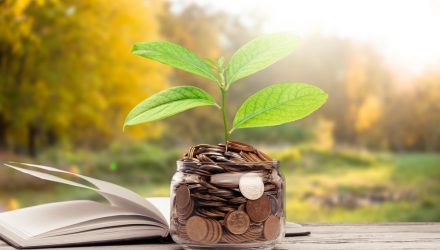ETF Trends, MAX CHEN
Environmental, social, and governance investments have gained traction among money managers this year, now accounting for about one third of total U.S. assets under professional management.
According to the U.S. SIF Foundation’s 2020 biennial “Report on US Sustainable and Impact Investing Trends,” sustainable investing assets now total $17.1 trillion or $33% of the $51.4 trillion in total U.S. assets under professional money management, a 42% jump from 2018, MarketWatch reports. The sustainable investing category covers a wide breadth of investments that consider both financial return and social and environmental good.
The U.S. SIF has published the report every two years since 1995, when sustainable assets only made up $639 billion. Sustainably invested assets have consistently grown at a compound annual growth rate of 14%, with the most rapid growth occurring since 2012.
Among the most popular sub-categories among ESG issues, climate change is the most important aspect cited from money managers whom invest both institutional and retail money, accounting for $4.2 trillion, a 39% increase from 2018 levels.
Among institutions, which include institutional asset owners, insurance companies, and retirement plan sponsors, climate change was also the most important global issue addressed, at $2.6 trillion in management money invested, a rise of 17% over 2018 levels. Insurance companies and educational institutions also underscored climate change as their top ESG investment focus.
Meg Voorhes, director of research at U.S. SIF, explained that climate change investments focused on opportunities to reduce greenhouse gas and carbon emissions. Respondents could also note other environmental investments they made help to mitigate climate change, including fossil-fuel divestment, investing in green buildings/smart cities, and clean technology.
Ways to Get Involved
As a way to help investors tap into these opportunities, State Street Global Advisors offers a suite of socially responsible and ESG-related ETFs. For example, the recently launched SPDR S&P 500 ESG ETF (EFIV) enhances both SPDR’s ESG and S&P 500 ETF offerings, helping investors incorporate ESG while achieving a risk and return profile comparable to the S&P 500. The ETF tracks the S&P 500 ESG Index, which is designed to measure the performance of securities meeting certain sustainability criteria (i.e. criteria related to environmental, social, and governance factors) while maintaining a similar overall industry group weight as the S&P 500 Index.
State Street Global Advisors’ SPDR S&P 500 Fossil Fuel Free ETF (SPYX) tries to allow climate change-conscious investors to align the core of their investment strategy with their values by eliminating companies that own fossil fuel reserves from the S&P 500.
The SPDR Kensho Clean Power ETF (CNRG) seeks to provide exposure to the clean power industry in terms of both generation and underlying technology. Alternative energy sources are an increasingly important part of the power generation conversation.
Finally, the SPDR MSCI ACWI Low Carbon Target ETF (NYSEArca: LOWC) targets the MSCI ACWI Low Carbon Target Index, which tries to address carbon exposure by overweighting companies with low carbon emissions relative to sales and per dollar of market capitalization, compared to the broader market. LOWC was created for the U.N. Joint Staff Pension Fund.







